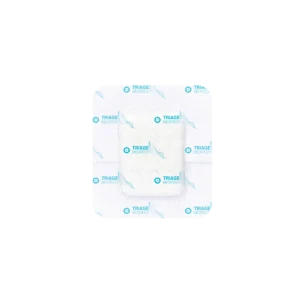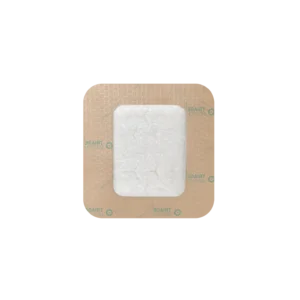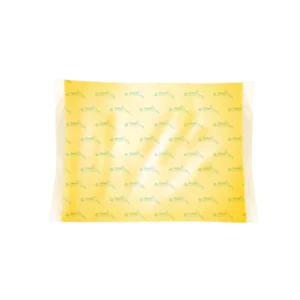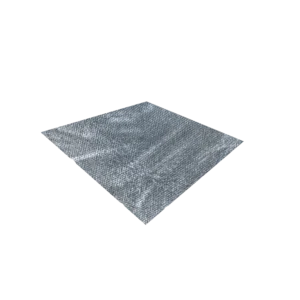CYCLOTHERA – Closed Cyclic Negative Pressure Wound Therapy (CCNPWT): A Scientific Overview for Clinicians
Closed Cyclic Negative Pressure Wound Therapy (CCNPWT) is a non-invasive, active wound management system that applies sub-atmospheric pressure to a wound bed. This has become a cornerstone of wound care for a wide range of complex and chronic wounds. The science behind CCNPWT’s efficacy is multifaceted, involving biomechanical, cellular, and physiological effects.
The Core Mechanism: Application of Sub-Atmospheric Pressure
The CCNPWT system consists of three primary components:
- Dressing: Typically, an open-cell PU Foam, which is placed directly on the wound bed.
- Adhesive drape: This creates an airtight seal over the wound and the dressing.
- Canister: A transparent jar with aqua gel for exudate collection
- BVL Filter: Bacterial transmission filter
- Therapy Device: This unit applies and maintains a cyclic or intermittent negative pressure through a tube connected to the dressing.
The pressure is typically set between -20 mmHg and -220 mmHg, with -125 mmHg being the most common therapy setting for many applications.
The Scientific Mechanisms of Action
The therapeutic effects of NPWT are not due to a single mechanism but rather a combination of interconnected biological and physiological processes.
1. Macro-Deformation and Contraction:
Mechanism: The negative pressure causes a uniform, inward force on the wound bed and its surrounding tissue. This force leads to visible contraction of the wound edges, reducing the overall wound area.
Clinical Significance: This “macro-deformation” directly facilitates wound closure by physically pulling the wound edges together. In large wounds, this can significantly reduce the size of the defect, requiring less tissue for subsequent surgical closure or allowing for faster granulation and epithelialization.
2. Micro-Deformation and Cellular Mechano-transduction:
Mechanism: At a cellular level, the negative pressure induces a mechanical stretch on the cells within the wound bed. This triggers mechano-transduction, the process by which mechanical stimuli are converted into biochemical signals.
Clinical Significance: The cellular response to this micro-deformation is profound. It stimulates a cascade of events, including:
Increased cell proliferation (fibroblasts, endothelial cells).
Upregulation of growth factors (e.g., VEGF, FGF-2) that are crucial for angiogenesis and tissue regeneration.
Enhanced migration of cells to the wound site, accelerating the formation of granulation tissue.
3. Edema Reduction and Exudate Management:
Mechanism: The suction actively removes excess interstitial fluid (edema) and exudate from the wound bed.
Clinical Significance:
Improved Perfusion: Edema can increase tissue pressure, compressing capillaries and impairing blood flow. By removing this fluid, CCNPWT lowers interstitial pressure, which improves tissue perfusion and oxygenation. A well-oxygenated wound is less susceptible to infection and has a more robust healing response.
Reduced Bacterial Load: The constant removal of fluid flushes away microorganisms and inflammatory mediators from the wound bed, which helps to control local infection and inflammation.
4. Angiogenesis and Neovascularization:
Mechanism: As mentioned above, the micro-deformation stimulates the release of pro-angiogenic growth factors. The improved blood flow and reduced edema also create a more favorable environment for new blood vessel formation.
Clinical Significance: A rich, healthy blood supply is fundamental for healing. It delivers the necessary oxygen, nutrients, and immune cells to the wound bed, supporting tissue growth and fighting infection. CCNPWT’s ability to promote angiogenesis is one of its most critical therapeutic effects.
5. Creation of a Controlled and Protected Environment:
Mechanism: The sealed dressing creates a closed system that isolates the wound from the external environment.
Clinical Significance: This provides a physical barrier against external contamination, reducing the risk of nosocomial infections. It also creates a moist wound bed, which is known to be ideal for cell migration and epithelialization, without the risk of maceration from excess fluid.
Clinical Indications and Applications
NPWT is indicated for a broad spectrum of acute and chronic wounds, including:
- Chronic wounds (e.g., diabetic foot ulcers, pressure ulcers, venous ulcers)
- Acute wounds (e.g., surgical debridement wounds, traumatic injuries)
- Partial-thickness burns
- Skin grafts and flaps (to enhance graft take)
- Surgically closed incisions in high-risk patients
- Open abdominal wounds
Contraindications and Precautions
NPWT is not without its risks and contraindications. Clinicians must be aware of:
- Presence of untreated osteomyelitis.
- Necrotic tissue with eschar present (must be debrided first).
- Non-enteric and unexplored fistulas.
- Malignancy in the wound.
- Exposed blood vessels, nerves, or anastomotic sites.
- Active bleeding.
In conclusion, CCNPWT is a sophisticated wound care modality with a solid scientific foundation. Its ability to mechanically and biochemically influence the wound environment makes it a powerful tool for accelerating wound healing and reducing complications in a wide range of patient populations. For clinicians, a deep understanding of these underlying scientific principles is essential for proper patient selection and effective wound management.









